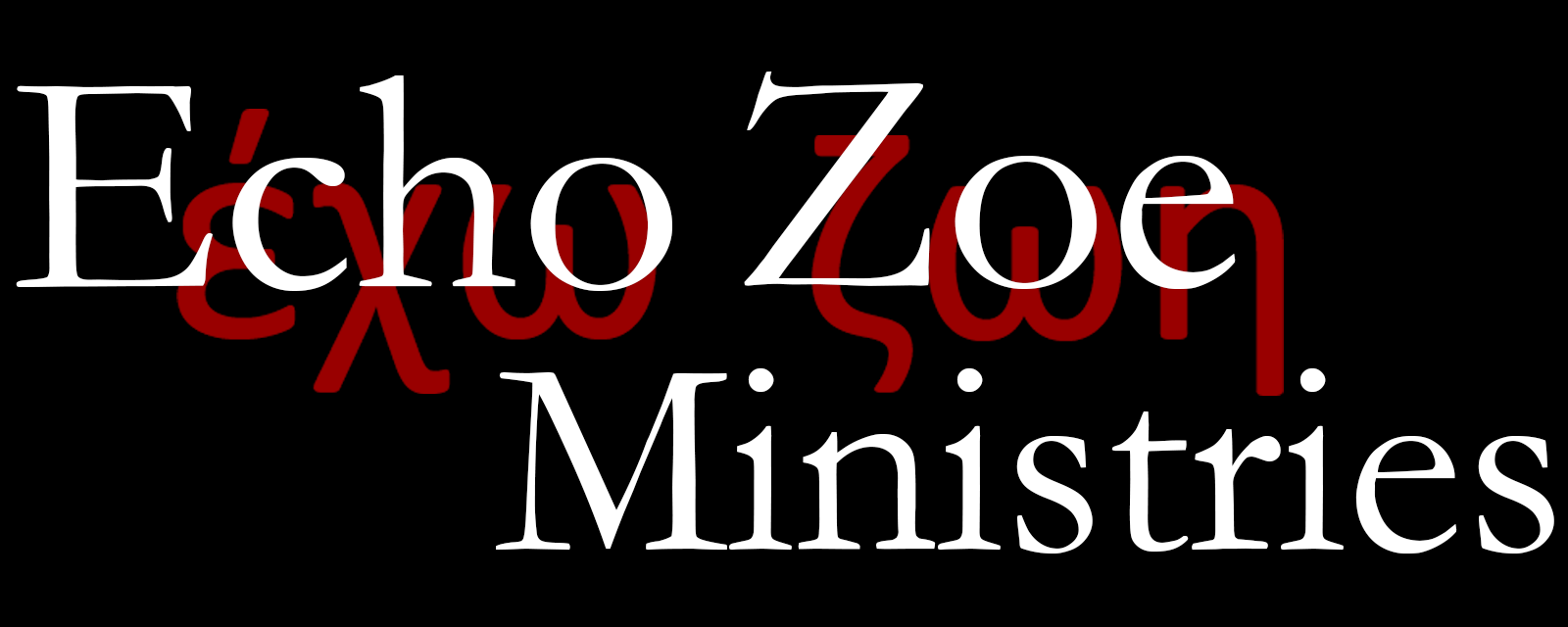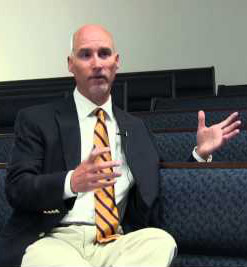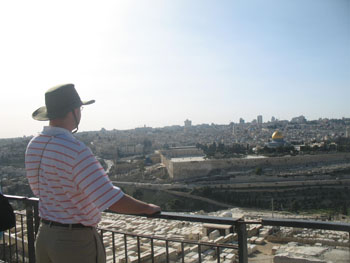 Richard Bennett originally comes from Ireland. He was trained by Jesuits in his early years, and received eight years of theological instruction and preparation for the priesthood with the Dominicans. He completed his education at the Angelicum University in Rome in 1964. He spent twenty-one years as a Catholic parish priest in Trinidad, West Indies. He had, therefore, the best of academic training in things Catholic, plus twenty-one years of being a parish priest applying Catholic teachings to everyday life. After a serious accident in 1972, in which he nearly lost his life, he began to study seriously the Bible. After nearly fourteen years of contrasting Catholicism to Biblical truth, he was convicted by the Gospel message. In 1985, he saw that justification is not being inwardly just as Rome taught, but being accepted in Christ. He was then saved by God’s grace alone and formally left the Roman Catholic Church and its priesthood. He has founded an evangelistic ministry to Catholics called “Berean Beacon.†He joins Echo Zoe Radio this month to share his testimony and to talk about Roman Catholicism.
Richard Bennett originally comes from Ireland. He was trained by Jesuits in his early years, and received eight years of theological instruction and preparation for the priesthood with the Dominicans. He completed his education at the Angelicum University in Rome in 1964. He spent twenty-one years as a Catholic parish priest in Trinidad, West Indies. He had, therefore, the best of academic training in things Catholic, plus twenty-one years of being a parish priest applying Catholic teachings to everyday life. After a serious accident in 1972, in which he nearly lost his life, he began to study seriously the Bible. After nearly fourteen years of contrasting Catholicism to Biblical truth, he was convicted by the Gospel message. In 1985, he saw that justification is not being inwardly just as Rome taught, but being accepted in Christ. He was then saved by God’s grace alone and formally left the Roman Catholic Church and its priesthood. He has founded an evangelistic ministry to Catholics called “Berean Beacon.†He joins Echo Zoe Radio this month to share his testimony and to talk about Roman Catholicism.
Podcast: Play in new window | Download (Duration: 1:01:00 — 28.0MB)
Subscribe: RSS | Subscribe to Echo Zoe Radio
An Outline of the Discussion
- Richard was a Roman Catholic priest for 22 years. After a very serious (nearly fatal) accident, he began studying the Bible, which led him to understand that no church saves, that salvation is by grace alone, through faith alone in Christ alone.
- Though Richard was in seminary for eight years, he never studied the Bible to any real depth, but only introductions to various books. He studied a lot of philosophy, including three years of Aristotle. That was followed by four years of study in Thomas Aquinas.
- Richard was of the Dominican order. His focus, and skill, was on Thomas Aquinas. This took his focus off of Christ.
- Richard was sheltered from the outside world, never encountering non-Catholics, and didn't have to engage in apologetics as a Catholic. In fact, he never received mail without it first being read by his superiors and censored.
- After nearly 14 years of studying the Bible (following his accident), the verse that “did him in” was Ephesians 2:1: And you were dead in the trespasses and sins.
- Richard has a deep appreciation for, and respect for, the five solas: Salvation being by Grace Alone, through Faith Alone, in Christ Alone, to the Glory of God alone; and that all authority in regards to faith and practice are found in Scripture Alone. Compare this to the official teaching of Roman Catholicism, as found in paragraph 1129 of the catechism:
The Church affirms that for believers the sacraments of the New Covenant are necessary for salvation. “Sacramental grace†is the grace of the Holy Spirit, given by Christ and proper to each sacrament. The Spirit heals and transforms those who receive him by conforming them to the Son of God. The fruit of the sacramental life is that the Spirit of adoption makes the faithful partakers in the divine nature by uniting them in a living union with the only Son, the Savior. (bold denotes portion quoted in the interview)
- Richard has a book entitled Far From Rome Near to God: The Testimonies of Fifty Converted Catholic Priests. In the book, Richard and 49 other former Catholic priests give their testimony of how they came to salvation in Christ and left Roman Catholicism. Of the 50, all but one came to a Biblical understanding of salvation simply by reading the Bible.
- We address the question of leaving Roman Catholicism, rather than staying in and trying to reform it from within. Richard responds by asking how someone could stay in a system that blatantly denies that which is clearly seen in Scripture. For example, the Scriptures have people only praying to God, but most prayers in Catholicism are directed at Mary and the saints.
- When asked about leading Catholics to salvation that is through Christ as described in the Scriptures, Richard asked that people take a look at the videos he has available on his website. There are also audios and articles available there as well.
- There is an emphatic connection between Roman Catholicism and the Emergent Church. Emergent leaders point people back to mystical contact with God, and refer to Catholic sources and practices to do so.
- Most Catholic churches in the West are dedicated to Mary. Mary is predominant in Catholic churches. Section 2677 of the Catholic catechism says:
Holy Mary, Mother of God: With Elizabeth we marvel, “And why is this granted me, that the mother of my Lord should come to me?†Because she gives us Jesus, her son, Mary is Mother of God and our mother; we can entrust all our cares and petitions to her: she prays for us as she prayed for herself: “Let it be to me according to your word.†By entrusting ourselves to her prayer, we abandon ourselves to the will of God together with her: “Thy will be done.â€
Pray for us sinners, now and at the hour of our death: By asking Mary to pray for us, we acknowledge ourselves to be poor sinners and we address ourselves to the “Mother of Mercy,†the All–Holy One. We give ourselves over to her now, in the Today of our lives. And our trust broadens further, already at the present moment, to surrender “the hour of our death†wholly to her care. May she be there as she was at her son’s death on the cross. May she welcome us as our mother at the hour of our passing to lead us to her son, Jesus, in paradise. (italics in original, the bold is the portion quoted in the interview)
Also in 2030, it says:
It is in the Church, in communion with all the baptized, that the Christian fulfills his vocation. From the Church he receives the Word of God containing the teachings of “the law of Christ.†From the Church he receives the grace of the sacraments that sustains him on the “way.†From the Church he learns the example of holiness and recognizes its model and source in the all-holy Virgin Mary; he discerns it in the authentic witness of those who live it; he discovers it in the spiritual tradition and long history of the saints who have gone before him and whom the liturgy celebrates in the rhythms of the sanctoral cycle. (italics in original, the bold is the portion quoted in the interview)
- In Catholicism, there is a concept of communion with the dead. In some regards, this is where the connection to Mary comes from. It also ties in to their doctrine of purgatory. Catechism section 958 says:
Communion with the dead. “In full consciousness of this communion of the whole Mystical Body of Jesus Christ, the Church in its pilgrim members, from the very earliest days of the Christian religion, has honored with great respect the memory of the dead; and ‘because it is a holy and a wholesome thought to pray for the dead that they may be loosed from their sins’ she offers her suffrages for them.†Our prayer for them is capable not only of helping them, but also of making their intercession for us effective. (italics in original, the bold is the portion quoted in the interview)
Also in 2683:
The witnesses who have preceded us into the kingdom, especially those whom the Church recognizes as saints, share in the living tradition of prayer by the example of their lives, the transmission of their writings, and their prayer today. They contemplate God, praise him and constantly care for those whom they have left on earth. When they entered into the joy of their Master, they were “put in charge of many things.†Their intercession is their most exalted service to God’s plan. We can and should ask them to intercede for us and for the whole world. (italics in original, the bold is the portion quoted in the interview)
It is generally accepted that the practice of communicating with the dead is a practice of the occult. It is not a practice sanctioned by the Scriptures.
- In Communion, we remember Christ's sacrifice on the cross to atone for sins. In the Mass, Catholicism teaches that the sacrifice of Christ is not finished, it is ongoing. It states in catechism section 1367:
The sacrifice of Christ and the sacrifice of the Eucharist are one single sacrifice: “The victim is one and the same: the same now offers through the ministry of priests, who then offered himself on the cross; only the manner of offering is different.†“And since in this divine sacrifice which is celebrated in the Mass, the same Christ who offered himself once in a bloody manner on the altar of the cross is contained and offered in an unbloody manner… this sacrifice is truly propitiatory.†(italics in original, the bold is the portion quoted in the interview)
Furthermore, the next section (1368) says:
The Eucharist is also the sacrifice of the Church. The Church which is the Body of Christ participates in the offering of her Head. With him, she herself is offered whole and entire. She unites herself to his intercession with the Father for all men. In the Eucharist the sacrifice of Christ becomes also the sacrifice of the members of his Body. The lives of the faithful, their praise, sufferings, prayer, and work, are united with those of Christ and with his total offering, and so acquire a new value. Christ’s sacrifice present on the altar makes it possible for all generations of Christians to be united with his offering.
In the catacombs the Church is often represented as a woman in prayer, arms outstretched in the praying position. Like Christ who stretched out his arms on the cross, through him, with him, and in him, she offers herself and intercedes for all men.(italics in original, the bold is the portion quoted in the interview)
Scriptures Referenced
- Ephesians 2:1
- Galatians 2:21
- John 19:30
- Hebrews 10:12
Additional Resources
- The Berean Beacon – Richard's ministry website
- Are you Right with God? – Richard's Gospel tract for Catholics
- Mike Gendron: Rome vs. Biblical Christianity – Echo Zoe Radio, episode 30




One thought on “Richard Bennett: Roman Catholicism”
You should Alan Kurschner and Zion’s Hope to your website list. I enjoy your show!